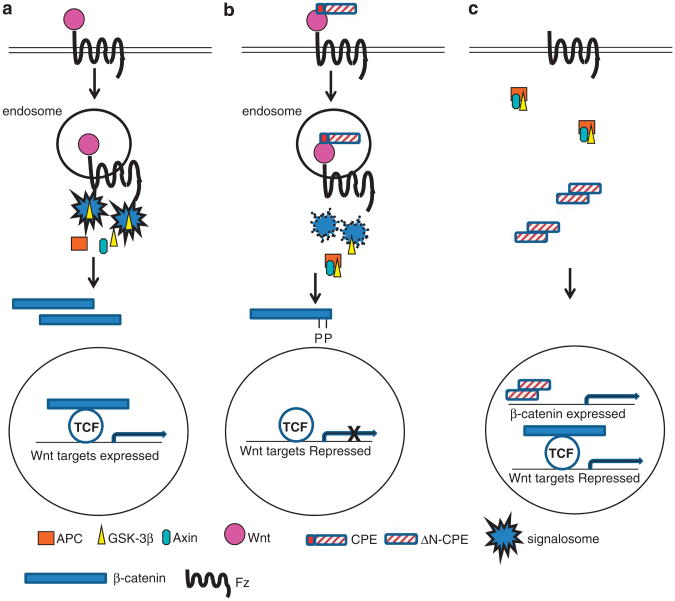Figure 8.
Hypothetic models for the role of F-CPE and ΔN-CPE in Wnt signaling. (a) Following binding of the Wnt ligand to its receptor, a complex containing different Wnt signaling components forms in cytoplasmic endosomes resulting in sequestration of GSK-3β and signalosome formation. The ‘β-catenin degradation complex’ is disassembled and β-catenin accumulates and translocates into the nucleolus. (b) Binding of F-CPE to Wnt and Fz affects signalosome formation and β-catenin can be efficiently degraded. (c) The ΔN-CPE splice variant expressed in cancer cells translocates into the nucleus and upregulates β-catenin mRNA transcription and protein levels to promote Wnt signaling.

